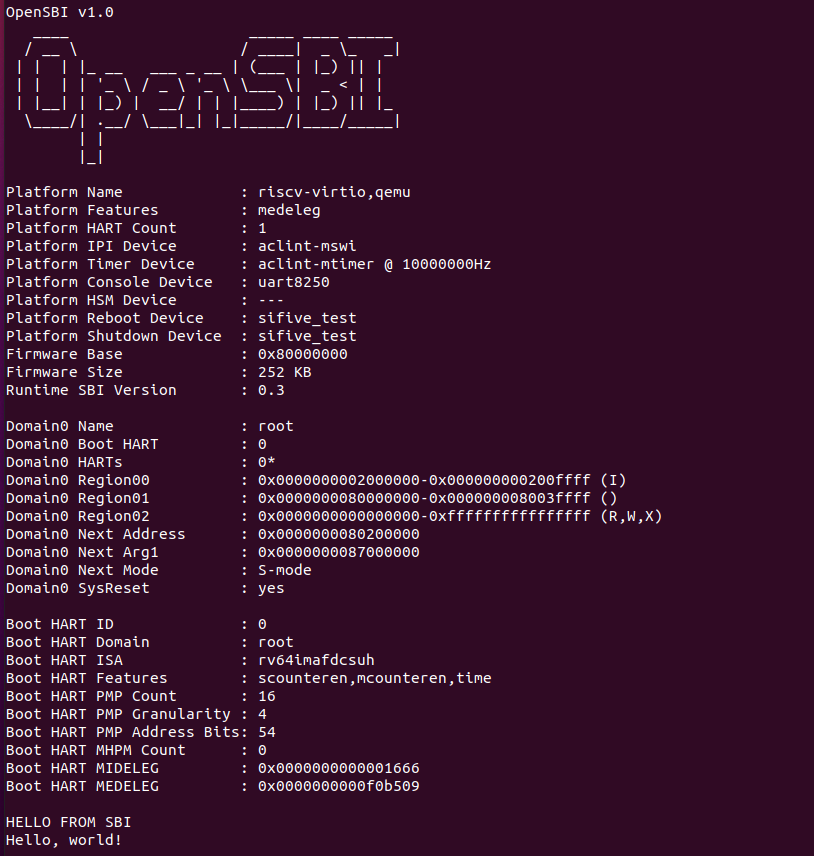helloworld 程序基于 axhal 组件实现输出
按照上一部分,既然 axhal 组件已经为我们准备好了 putchar 输出函数,其实我们已经可以编写 helloworld 程序进行输出了,如果关注了第三部分中 helloworld 运行的完整流程图就可以发现 helloworld 的运行还依赖于 libax,libax 就是提供一层类似于库函数的封装,它实现输出的本质还是用到我们提到的 axhal 中的输出,我们在此部分更多考虑地是 helloworld 与 axhal 组件进行搭配并且输出的过程,libax 可以看成是 helloworld 程序的一部分。
动手尝试
graph TD helloworld --> axhal
我们看到 boot.rs 的汇编代码最后有一段跳转到 entry 的代码, 目前来说,ArceOS 运行到这里之后,就会跳转到 rust_entry 函数(在axhal/src/platform/qemu_virt_riscv/mod.rs 文件中),这个函数会执行一些初始化流程,然后调用rust_main 函数(在 modules/axruntime/src/lib.rs 文件中), rust_main 函数会根据选择的 feature 进行初始化的流程, 最后会调用应用程序的 main 函数。
为避免引入过多组件, 我们直接将 axhal/src/platform/qemu_virt_riscv/mod.rs 里面 rust_entry 中调用的 rust_main() 函数换成应用程序的 main 函数(记得要在上面 extern 引用 main 函数), 并加上一行 self::misc::terminate(), 方便 arceos 运行完程序后终止,以防止ArceOS卡死不能正常退出(目前退出的功能依赖于下一部分提到的axruntime组件)。
axhal/src/platform/qemu_virt_riscv/mod.rs
extern "C" { fn trap_vector_base(); fn rust_main(cpu_id: usize, dtb: usize); fn main(); // 从外部引入main函数 #[cfg(feature = "smp")] fn rust_main_secondary(cpu_id: usize); } unsafe extern "C" fn rust_entry(cpu_id: usize, dtb: usize) { crate::mem::clear_bss(); crate::cpu::init_primary(cpu_id); crate::arch::set_trap_vector_base(trap_vector_base as usize); // rust_main(cpu_id, dtb); main(); // 跳转到应用程序的main函数 self::misc::terminate(); // 程序运行后终止 }
执行:
make PLATFORM=riscv64-qemu-virt A=apps/helloworld run
如无意外, helloworld成功输出!说明我们的思路是正确的,将要输出的内容通过 helloworld 传递给 axhal,这样只需要两个组件就能实现应用程序 helloworld 的运行和输出。

总结
其实 helloworld 程序本质还是调用 axhal 的 sbi 输出功能(具体步骤见第三部分流程图),我们把两个组件结合了起来!这也体现了 ArceOS 的思想,只需要把需要的部分组合起来就能实现我们想要的功能。